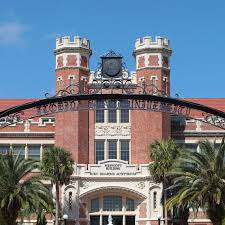Speaker
Description
Scattering experiments involving a hyperon and a proton are the most effective methods for investigating two-body hyperon–nucleon (𝑌𝑁) interactions, as is the case in various intensive studies on 𝑝𝑝 and 𝑛𝑝 scattering, which are aimed at understanding nucleon–nucleon (𝑁𝑁) interactions. Scattering observables, such as differential cross sections and spin observables, are essential experimental inputs for constructing theoretical frameworks of 𝑌𝑁 interactions assuming a broken flavor SU(3) symmetry. However, regarding hyperon–proton scattering experiments, no experimental progress has been made from the experiments conducted throughout the 1970s in which hydrogen bubble chambers were employed. This is owing to the experimental difficulties stemming from the low intensity of the hyperon beam and its short lifetime.
A new hyperon–proton scattering experiment, dubbed J-PARC E40, was performed to measure differential cross sections of the Σ-p, Σ+p elastic scatterings and the Σ-p→Λn scattering by identifying a lot of Σ particles in the momentum region ranging from 0.4 to 0.8 GeV/𝑐 produced by 𝜋±𝑝→→𝐾+𝑋 reaction. We successfully measured the differential cross sections of these three channels with a drastically improved accuracy with a fine angular step. These new data will become important experimental constraints to improve the theories of the two-body baryon-baryon interactions.
Following this success, we proposed a new experiment to measure the differential cross sections and spin observables by using a highly polarized Λ beam for providing quantitative information on the Λ𝑁 interaction.
In this presentation, we will present the results of three Σ𝑝 channels and future prospects of the Λ𝑝 scattering experiment.

